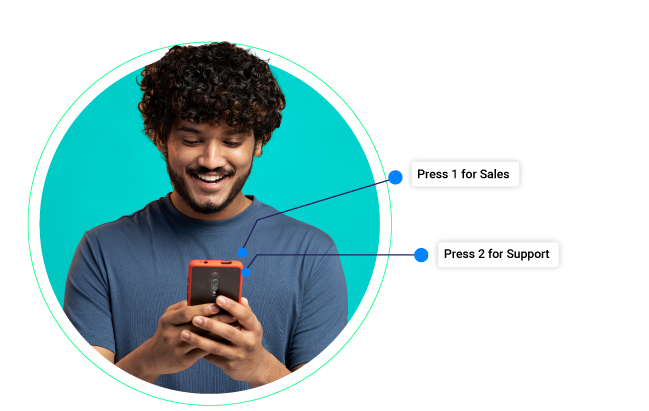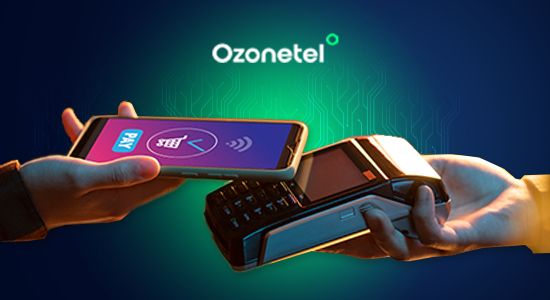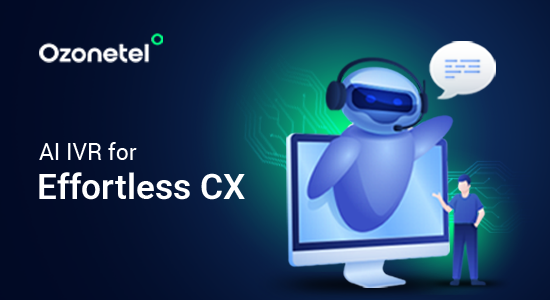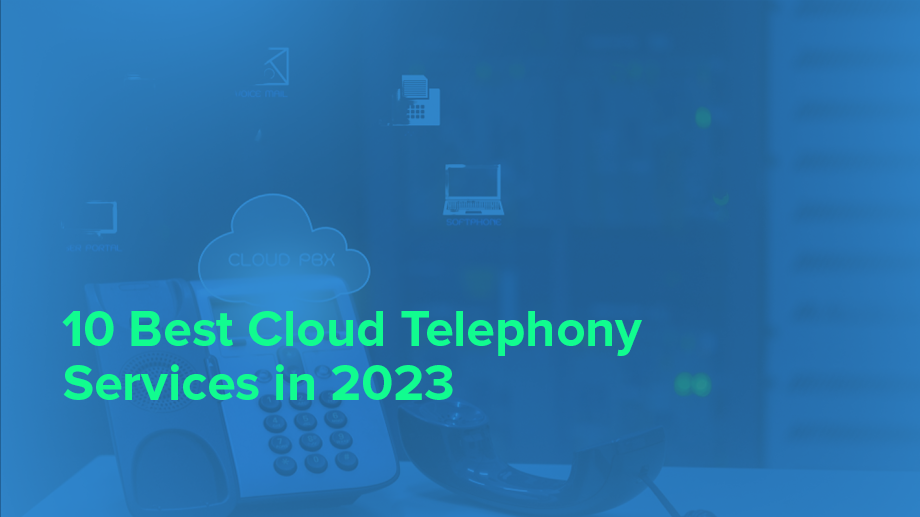- Resources
- IVR vs. IVA: Key Differences, Benefits & How to Choose the Right Solution
IVR vs. IVA: Key Differences, Benefits & How to Choose the Right Solution

When customers call your business, their experience depends on how quickly they get the help they need. That’s where IVR (Interactive Voice Response) and IVA (Intelligent Virtual Assistant) come in. Both automate customer interactions, but they work in different ways. IVR is great for simple tasks like routing calls, while IVA offers a more conversational and personalized experience. So, which one is right for you? Let’s break it down.
In this article, we will explore:
What is Employee Experience?
Employee Experience (EX) is the overall perception employees have of their journey within an organization. It encompasses every interaction and touchpoint, from recruitment and onboarding to daily responsibilities, support systems, and eventual offboarding.
What Are the Main Differences Between IVR and IVA?
Choosing between IVR and IVA depends on your business needs and the type of customer experience you want to offer. While both automate call handling, their capabilities and interaction styles differ significantly.
Here’s a detailed comparison to help you understand which solution fits your business best:
| Feature | IVR (Interactive Voice Response) | IVA (Intelligent Virtual Assistant) |
|---|---|---|
| Interaction Style | Uses keypad inputs and basic speech recognition to guide callers through menu options. | Engages in natural, human-like conversations using AI and natural language processing (NLP). |
| Call Routing | Routes call based on predefined menu selections. | Dynamically routes calls based on real-time understanding of customer intent. |
| Self-Service Capabilities | Limited to simple tasks like checking account balances or making payments. | Enables customers to complete complex tasks like troubleshooting and booking appointments without human assistance. |
| Personalization | Offers the same menu options to all callers. | Recognizes callers, retrieves past interactions, and tailors responses accordingly. |
| Integration with Business Systems | Limited integration with CRMs and databases. | Seamlessly connects with CRMs, payment gateways, and business tools for more advanced service. |
| Customer Experience | Can feel robotic and frustrating due to rigid menus. | Provides a smoother, more intuitive experience with open-ended interactions. |
| Scalability | Handles high call volumes efficiently but is less adaptable. | Easily scales and adapts to evolving customer needs and business processes. |
| Cost | Lower initial investment but may lead to higher operational costs due to call transfers. | Higher initial investment but reduces costs over time by improving self-service and efficiency. |
What is IVR?

Interactive Voice Response (IVR) is an automated phone system that interacts with callers, collects information, and directs calls based on pre-configured rules. Instead of speaking with a live agent immediately, callers use their phone keypad, or voice commands to navigate through a menu.
For example, an IVR system may prompt:
- “Press 1 for Sales”
- “Press 2 for Support”
- “Say ‘Billing’ to check your account balance”
IVR helps businesses manage high call volumes efficiently by routing callers to the appropriate department or providing automated responses to frequently asked questions.
How does an IVR work?
A well-designed IVR system improves call management, reduces wait times, and enhances customer service. Here are its key features:
- Automated Call Routing: IVR directs calls to the right department or agent based on the caller’s selection. This minimizes hold times and ensures customers get the assistance they need without unnecessary transfers.
- Dual-Tone Multi-Frequency (DTMF) Input: Callers can interact with the IVR system using their phone keypad. Each key corresponds to a different menu option, making navigation simple and intuitive.
- Speech Recognition: Advanced IVR systems understand spoken commands, allowing callers to say their request instead of pressing a button. This makes the experience more natural and reduces frustration.
- Pre-Recorded Messages and Prompts: IVR provides automated responses to common inquiries, such as business hours, account balances, and payment confirmations. This reduces the workload on customer service agents.
- Queue Management and Call Prioritization: During high call volumes, IVR places callers in a queue and informs them of their estimated wait time. Some systems also allow priority handling for VIP customers.
- Database Integration: IVR systems can retrieve customer data from databases to provide personalized responses, such as checking order statuses or confirming account details.
- Multi-Language Support: Businesses serving diverse customers can configure IVR to support multiple languages, improving accessibility and customer satisfaction.
Benefits of using IVR
A well-implemented IVR system streamlines customer interactions, improves efficiency, and reduces operational costs. But beyond just automating responses, it plays an important role in enhancing customer satisfaction and optimizing business resources. Here’s how IVR benefits your business:
1. 24/7 Automated Customer Assistance
Not all customer queries require a live agent, and not all businesses can afford round-the-clock staffing. IVR bridges this gap by offering automated support for frequently asked questions, such as account balances, payment confirmations, or appointment scheduling. Even after business hours, customers can get essential information, improving service availability without increasing operational costs.
2. Faster Call Handling and Reduced Wait Times
Long wait times often lead to customer frustration and abandoned calls. IVR minimizes this by automatically directing callers to the right department or providing instant answers to common inquiries. Instead of waiting for an available agent, customers can quickly navigate the system to get the assistance they need. This improves overall service efficiency while reducing customer drop-offs.
3. Streamlined Call Routing for Better Service
A well-structured IVR system enhances the customer journey by making interactions smooth and hassle-free. Instead of waiting on hold or being transferred multiple times, customers can quickly find the right solution. Whether checking order status or requesting a callback, IVR ensures they receive fast and accurate assistance, leading to higher satisfaction and brand loyalty.
4. Increased Productivity for Customer Support Teams
Customer service teams often deal with a mix of routine questions and complex issues. IVR helps by filtering out simple inquiries—like checking store hours or resetting passwords—so agents can focus on solving more critical concerns. This reduces burnout among support teams, allowing them to dedicate more time to providing personalized and high-quality service to customers who need it most.
5. Cost Savings Through Automation
Hiring and training customer support agents can be expensive, especially when handling routine inquiries. IVR automates repetitive tasks like processing payments, tracking orders, and verifying account details. By reducing the need for additional staff, businesses can lower payroll expenses while maintaining a seamless customer experience. The cost savings from IVR can then be redirected toward other business improvements.
6. Scalable Support for Business Growth
As businesses expand, so do customer inquiries. IVR systems can handle a growing call volume without requiring additional staff or infrastructure. Whether dealing with seasonal spikes in calls or a permanent increase in customer demand, IVR ensures that support remains efficient and uninterrupted. This scalability makes it a cost-effective solution for businesses planning for long-term growth.
7. Data-Driven Call Analytics for Service Optimization
Every customer interaction provides valuable data that can help businesses refine their support strategy. IVR systems track call durations, menu selections, and customer behaviors to identify common pain points. By analyzing this data, businesses can optimize call flows, improve self-service options, and fine-tune their IVR menus to create a better overall experience.
8. Consistent and Professional Customer Interactions
Unlike human agents who may have varying communication styles, IVR ensures a consistent and professional tone for every customer interaction. This standardization improves service reliability and reinforces brand identity, providing a seamless experience regardless of when or how often customers call.
9. Reduced Human Errors in Customer Interactions
IVR eliminates the risk of human errors in routine tasks like entering customer details, processing transactions, or verifying accounts. By automating these processes, businesses can ensure accuracy, reducing the chances of miscommunication or service delays.
What is IVA?

An Intelligent Virtual Agent (IVA) is AI-powered software designed to interact with customers through natural conversations. Unlike traditional automated systems, IVAs understand and respond to customer queries using Natural Language Processing (NLP) and Machine Learning (ML), making interactions more seamless and human-like.
IVAs are commonly used in customer service, contact centers, and self-service platforms to automate tasks such as answering inquiries, resolving issues, processing transactions, and routing calls—reducing the need for human intervention. They can work across multiple channels, including voice, chat, email, and SMS, ensuring consistent customer support.
How do IVA systems work?
IVA systems bring AI-powered automation to customer interactions, helping businesses improve efficiency and deliver a seamless service experience. These systems offer features such as:
- Conversational AI: IVAs use Natural Language Understanding (NLU) to interpret spoken or written language, allowing them to have fluid and natural conversations. Unlike chatbots, which rely on predefined responses, IVAs analyze customer intent and provide meaningful replies based on context.
- Intelligent Call Routing: Instead of relying on static menus like Interactive Voice Response (IVR) systems, IVAs route customer inquiries based on real-time intent detection. This ensures that callers are quickly connected to the right department or resolution without unnecessary steps.
- Seamless Integration: IVAs connect with Customer Relationship Management (CRM) platforms, payment gateways, and databases, allowing them to access real-time customer information.
- Self-Service Capabilities: Customers can complete tasks such as:
- Checking account balances
- Making payments
- Booking appointments
- Requesting refunds or order updates
- Security and Compliance: Many IVA systems support voice biometrics for secure authentication and comply with industry regulations such as PCI DSS (for secure transactions) and HIPAA (for handling healthcare data).
Benefits of using IVA
With their ability to handle complex queries, integrate with business tools, and adapt across multiple channels, IVAs help businesses provide faster, more accurate, and personalized support. Some key benefits include:
1. 24/7 Support Without Wait Times
An IVA operates round the clock, meaning your customers can get support at any time without being restricted by business hours. Whether it’s a midnight billing inquiry or an early morning appointment request, the system ensures that customers receive immediate assistance. This continuous availability not only boosts customer satisfaction but also increases engagement by offering help when customers need it most.
2. Instant Query Resolution and Reduced Workload for Agents
Customers no longer have to wait in long queues for an agent to answer simple queries. An IVA immediately understands the customer’s intent and provides relevant responses without delays. Whether it’s checking an account balance, processing a refund, or providing order updates, an IVA can complete these tasks within seconds—freeing up live agents for more complex issues.
3. Personalized and Context-Aware Interactions
Unlike traditional automated systems that offer pre-set responses, IVAs analyze customer data in real-time to offer tailored responses. By integrating with CRM systems, IVAs recognize returning customers, recall past interactions, and provide relevant solutions without requiring customers to repeat themselves. This level of personalization improves customer satisfaction and builds trust.
4. Cost Savings Through Automation
By automating repetitive and low-complexity tasks, IVAs reduce the need for a large customer support team—helping businesses save on operational costs. Fewer resources are spent on handling simple queries, allowing businesses to allocate human agents to higher-value interactions that require expertise and empathy.
5. Scalable Support for Peak Demand
During peak hours or seasonal surges, businesses often struggle to manage the influx of customer inquiries. An IVA scales instantly to handle an increasing number of interactions without affecting service quality. This ensures that every customer gets the assistance they need, regardless of demand fluctuations.
6. Seamless Omnichannel Customer Experience
Customers engage with businesses through multiple channels—phone, chat, email, and social media. An IVA connects across all these platforms to offer a consistent and unified experience. If a customer starts a conversation via chat and later switches to a call, the IVA retains the context, ensuring a smooth transition without loss of information.
7. Intelligent Sentiment Analysis for Better Support
IVAs don’t just understand words—they analyze tone, urgency, and sentiment to determine how a customer is feeling. If frustration is detected, the IVA can adjust its responses accordingly or escalate the query to a live agent for immediate attention. This helps businesses manage interactions more effectively and improve customer satisfaction.
8. Multilingual Support for Diverse Customer Bases
IVAs can communicate in multiple languages, making it easier for businesses to serve a diverse customer base. Whether customers prefer English, Spanish, or any other language, the IVA adapts, ensuring seamless communication and a better experience for non-native speakers.
9. Data-Driven Insights for Continuous Improvement
Every customer interaction with an IVA generates valuable insights. Businesses can analyze call patterns, common queries, and customer behavior to refine their support strategies. These insights help optimize workflows, enhance self-service options, and improve the overall effectiveness of the IVA system.
Choosing the Right Solution: Factors to Consider
IVRs are ideal for structured call flows and routine inquiries, while IVAs provide advanced AI-driven conversations and personalized support. If you’re unsure which system fits your business, consider the following factors:
When to Choose IVR?
IVR is a reliable choice when your business needs structured, menu-based automation to handle high call volumes efficiently. It works best for:
- Routine inquiries: Checking account balances, appointment confirmations, or basic FAQs.
- Call routing: Directing callers to the right department or agent based on predefined inputs.
- Budget-conscious solutions: IVRs have a lower upfront cost and require minimal AI integration.
- Basic speech recognition: Some IVRs can handle simple voice commands but lack advanced NLP capabilities.
When to Choose IVA?
An IVA is the better option if your business requires intelligent, human-like interactions with a focus on personalization and automation. It’s ideal for:
- Handling complex customer queries: IVAs can process natural language requests and understand the context.
- Personalized interactions: IVAs integrate with CRM and customer data platforms to provide tailored responses.
- Scalability and efficiency: They can handle large call volumes while reducing agent workload.
24/7 customer support: Unlike IVRs, IVAs engage in real-time conversations with users across multiple channels, ensuring round-the-clock service.
Set Up a Customizable, Intelligent IVR Solution With Ozonetel
Ozonetel offers a fully customizable and intelligent IVR system designed to enhance customer interactions and streamline call center operations. The IVR comes with key features such as multi-level call routing, self-service menus, personalized greetings, call recording, and analytics. The IVR system supports various input methods, including touch-tone (DTMF) and speech recognition, allowing callers to navigate menus using their voice or keypad. Additionally, Ozonetel’s IVR can be integrated with existing software through open APIs, facilitating seamless connectivity with CRM, ERP, chatbots, and analytics platforms.
Conclusion
When EX is strong, employees are engaged, motivated, and less likely to leave, which means less turnover, more productivity, and a culture people want to be part of. Leaders who invest in EX aren’t just keeping up with trends; they’re actively setting their companies up for a competitive edge in attracting and keeping top talent.
Take a close look at your current EX. Where are the gaps? What could be done better? Small improvements today can create a lasting impact tomorrow. A positive employee experience doesn’t just improve work for your team—it drives real results that lift the whole organization. So, let’s get moving on building an EX that truly shines.
Start your EX journey today by conducting employee surveys, implementing flexible work arrangements, and investing in employee development.
Ready to build a smarter, more intuitive IVR system? Talk to our experts and see how Ozonetel can customize a voice solution that fits your business needs.
Frequently Asked Questions
An Intelligent Virtual Agent (IVA) is an AI-powered system that automates customer interactions using natural language processing (NLP) and machine learning. IVAs can handle complex queries, provide personalized responses, and integrate with multiple business systems to deliver seamless support across channels like voice, chat, email, and social media.
An Interactive Voice Response (IVR) system is a telephony technology that allows customers to interact with a menu-based system using keypad inputs or voice commands. IVR primarily routes calls to the right department or provides pre-recorded information, helping businesses manage call volumes efficiently. Unlike IVAs, IVRs are rule-based and do not understand natural language or context.
Yes, chatbots and IVAs are different. A chatbot is a basic rule-based system that responds to predefined commands and works primarily in text-based interfaces. An IVA, on the other hand, uses advanced AI, understands natural language, and can engage in complex, human-like conversations across multiple channels, including voice. IVAs offer a more intelligent and personalized experience compared to traditional chatbots.







